
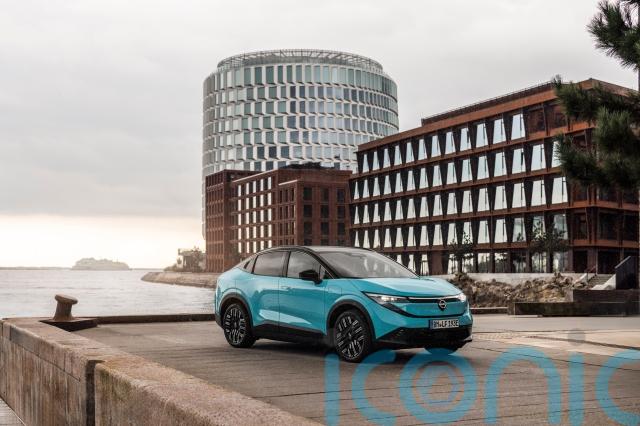
The Nissan Leaf is the trailblazer when it comes to mass-market EVs, after its launch in 2011.
It became the Japanese firm’s pièce de résistance as no other car maker had entered into this niche sector yet.
Fast forward 14 years and the EV market is booming, with several models offering 300-mile plus electric driving ranges and DC rapid-charging capability.
However, over the years, the Leaf was being overshadowed by the growing number of electric SUVs on the market. So, for the third-generation car, Nissan has gone back to the drawing board and redesigned this very important model for the marque from a hatchback into an SUV.
So, does that mean the Leaf is just another anonymous family car, or does it have real potential to break the mold and be a class-leader?
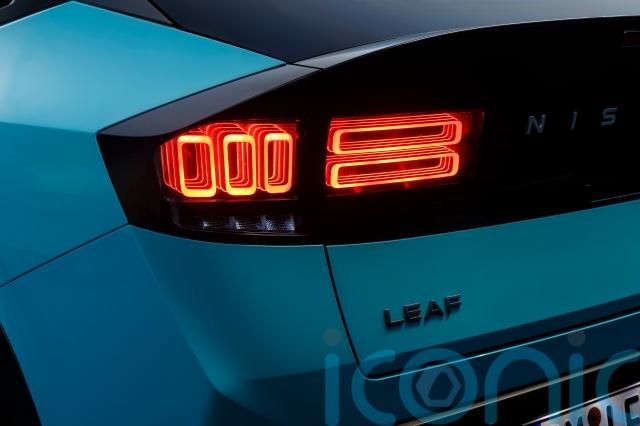
Pretty much everything about this third-generation car is new. It will be produced at Nissan’s Sunderland plant in the UK, and it will sit on the firm’s ‘CMF-EV’ modular platform, which is shared with the larger Ariya SUV in the firm’s model line-up.
It’s also bigger and wider than the hatchback model it replaces, which should help with interior space, as well as featuring new on-board ‘NissanConnect’ with Google built-in technology.
The car’s design is a lot sleeker, which helps with aerodynamics, and there is a choice of new battery packs, which are compatible with faster charging speeds and better claimed ranges.
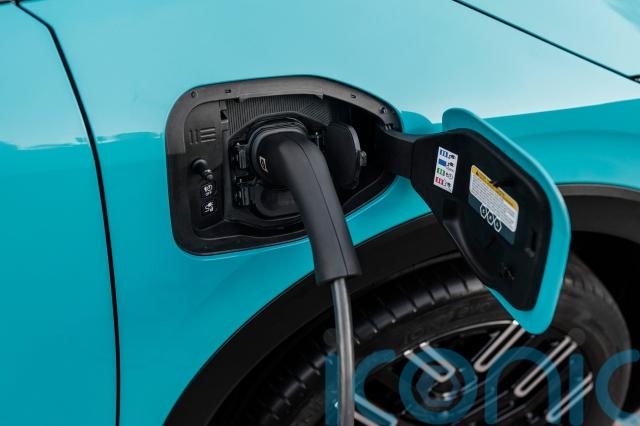
The Leaf will be available with a choice of two battery options; ‘Standard Range’ 52kWh or an ‘Extended Range’ 75kWh unit.
Our test car comes fitted with the larger 75kWh setup and electric motor to produce a total of 212bhp and 355Nm of torque. The car can accelerate to 60mph in 7.6 seconds, or 7.4 seconds in ‘Sport Mode’, and the car will run all the way up to 99mph.
Nissan claims that the car can do an estimated 386 miles between trips to the plug. It’s also 150kW DC rapid-charging compatible, which the manufacturer claims can add 273 miles of range in 30 minutes.
The smaller 52kWh battery and electric motor produces a total of 171bhp and 345Nm of torque, while it has a claimed range of up to 271 miles on a single charge.
The Nissan Leaf has now become an SUV! pic.twitter.com/KUpnlqcJz1
— Cameron Richards (@CamRichards13) October 10, 2025
The Leaf isn’t a car that is going to set the world alight in the driving stakes, but as a daily commuter, it ticks all of the right boxes.
Out on the open road, the car’s comfortable ride means it’s a rather relaxing long-distance cruiser, while there is little intrusion into the cabin from road and tyre noise, with only a little bit of wind whistle coming from around the door mirrors.
The ‘e-Pedal’ mode allows the driver to coast around town on one pedal, allowing the driver to lift off the accelerator pedal, which slows the vehicle down through regenerative braking, and puts power back into the battery.
But, the Leaf isn’t the most dynamic car in this sector, as there is a lot of body lean when around the twisty bits, while the vague steering makes it rather anonymous to drive. Other problems are with limited rear visibility, as the car’s narrow rear window and upright head rests make reversing a little tricky.
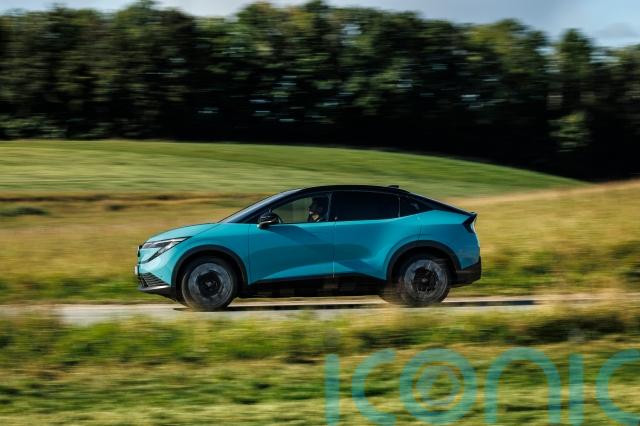
This new model has been completely transformed with its exterior design, which has certainly boosted the appeal.
The slippery body is there to help improve air flow over the car, while the flush door handles, sloping roofline and hidden rear door handles give the Leaf a much more sporty appearance.
Other details include the unique 3D taillight signature, boomerang-style front headlights and kick-up tailgate, which gives a nod to the firm’s 400Z coupe.
Although, from some angles, the Leaf could be mistaken for its larger brother, the Ariya, but the car’s more dynamic look does make it the more handsome choice of the two.
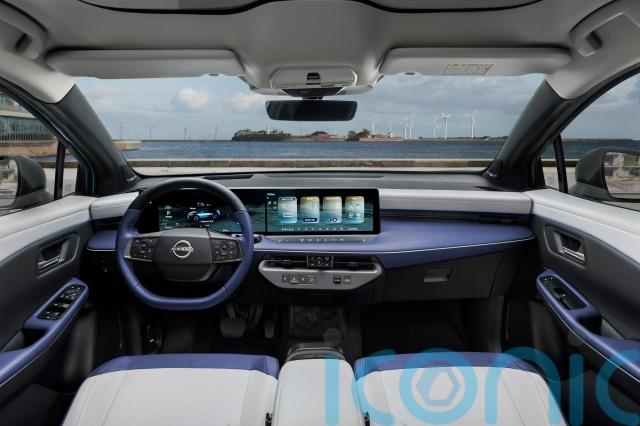
At first glance, the Leaf’s cabin design is simple and logically laid out, but there are few touches that make it feel a little bit dated.
The physical buttons on the steering wheel are great for usability, but the design itself feels as though it’s come from a car ten years ago.
There are two 14.3-inch screens and a curved dashboard design to make the cabin feel more futuristic. It’s just a shame that a lot of the materials feel cheap and not very nice to touch.
Storage is good though, with large door bins, some underneath armrest storage, cup holders and a hidden compartment below the gear selector on the dashboard.
Our test car also comes with Nissan’s dimming panoramic roof, which allows for the glass to turn opaque, reducing light and heat into the cabin, and freeing up space by not having a blind.
Space in the back is only average. The high floor and shorter wheelbase means that leg and kneeroom is rather tight and you feel that your knees are positioned too upright, which could make it uncomfortable on a long journey.
The Leaf packs a 437-litre boot, which is more than a Volkswagen ID.3, but less than the 460 litres you have to play with on the Kia EV3 and the Skoda Elroq’s 470-litre capacity. There’s no frunk either, but at least there is a false floor, which does add a bit more flexibility.
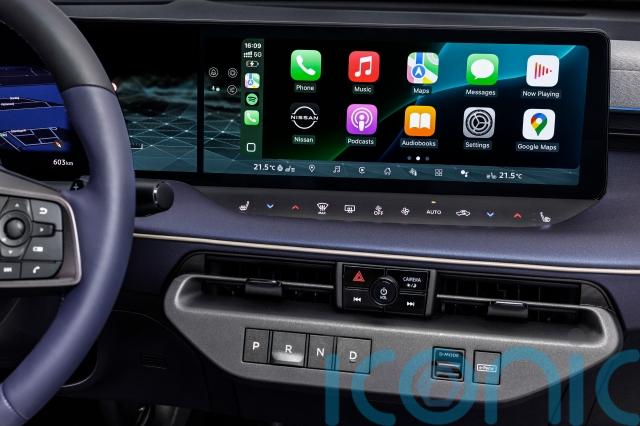
Here in the UK, there will be four trim levels on offer, with Engage, Engage+, Advance and Evolve.
Prices and final specifications are yet to be revealed at this stage, but it’s anticipated that prices will start at around £33,000 for the 52kWh car and rising to £36,000 for the larger 75kWh version.
An energy-saving heat pump does come as standard on the larger battery model, and flagship ‘Evolve’ cars will come with two-tone paint.
Plus, the Leaf could also qualify for the government’s full Electric Car Grant incentive of £3,750, which will certainly boost its appeal against the competition, with cars such as the Skoda Elroq only receiving a £1,500 price reduction.
The Leaf is a car that you’re going to buy with your head instead of your heart, but that isn’t a criticism.
Nissan has done a good job with this new third iteration, as it has a stylish exterior, simple interior and decent electric range.
The Leaf is never going to set hearts racing, as the driving experience is rather bland and it’s not as practical as some rivals.
But, there’s no denying that this Japanese alternative is a very sensible choice for those looking for an electric SUV. We just think that cars such as the Kia EV3 and Skoda Elroq are more engaging to drive and better all-rounders in this highly competitive market.
Subscribe or register today to discover more from DonegalLive.ie
Buy the e-paper of the Donegal Democrat, Donegal People's Press, Donegal Post and Inish Times here for instant access to Donegal's premier news titles.
Keep up with the latest news from Donegal with our daily newsletter featuring the most important stories of the day delivered to your inbox every evening at 5pm.